Across the country, there has been a public outcry against Confederate-era monuments and statues. This year, the outcry peaked after a white nationalist rally turned violent in Charlottesville, Va., on August 12. Government officials, including Senator Cory Booker from New Jersey and Representative Nancy Pelosi of California, have called to remove statues, markers and monuments that celebrate controversial Civil War era figures.
Karen Anderson, Executive Director, ACLU of North Carolina, wrote that in her home state of North Carolina, there are 90 different monuments to the Confederacy on public land, but there are no monuments to any of “our other ancestors — to those who were enslaved, “to abolitionists, to pro-Union North Carolinians, to the Black soldiers who fought and died to defeat the Confederacy.” She continues, saying that this unequal balance of monuments sends the message that “we are less valued as citizens” and that is why the ACLU of North Carolina called for the monuments to come down.
During a public forum focused on this topic in Queens, New York, on Nov. 17, a 27-year-old indigenous woman said the statues should be taken down because “statues should reflect what the cities respect and a lot of the statues right now do not reflect that.” She said it is problematic for young people to not see themselves represented in the statues and monuments in their own city.
Meanwhile, many people at the forum suggested that the monuments were painful to see, but that instead of taking them down, they should be moved into a museum, or there should be a way people can learn about the history behind the statues, through a plaque or an app that would bring up more information on your mobile device. In an opinion article for USA Today, Ellis Cose writes “valuable lessons can indeed be learned from studying the history of these monuments.” Instead of getting rid of them, he suggests, we “should put plaques and other material in place that point out that these men were traitors, not American heroes, and that their ugly legacy haunts us still.”
But there are those who believe that the monuments and statues should stay because removing them sets a dangerous precedent. At the same public forum in Queens, Jeffrey Kessler, a librarian at John Jay College of Criminal Justice, said that “As a historian, as an American, as a New Yorker, I recoil at the notion of white washing history. History is not pretty. History does not care how you feel.”
In a September editorial, Nature writes that “erasing names, however, runs the risk of whitewashing history.”
Alfred L. Brophy, a Judge John J. Parker distinguished professor of law at University of North Carolina, Chapel Hill, wrote for Newsweek, that the statues are “another reminder of the need for nuance in the telling of our nation’s history; in understanding how we get to where we are today, we need to acknowledge the good along with the bad—which means not tearing it down.”
There are likely hundreds of Confederate-era statues in the United States — and many other statues and monuments from different eras are now being viewed under new eyes. As we enter the new year, how do we navigate these multi-sided discussions? And what will happen to the statues and monuments nationwide?
Alabama
Birmingham
Monument Covered
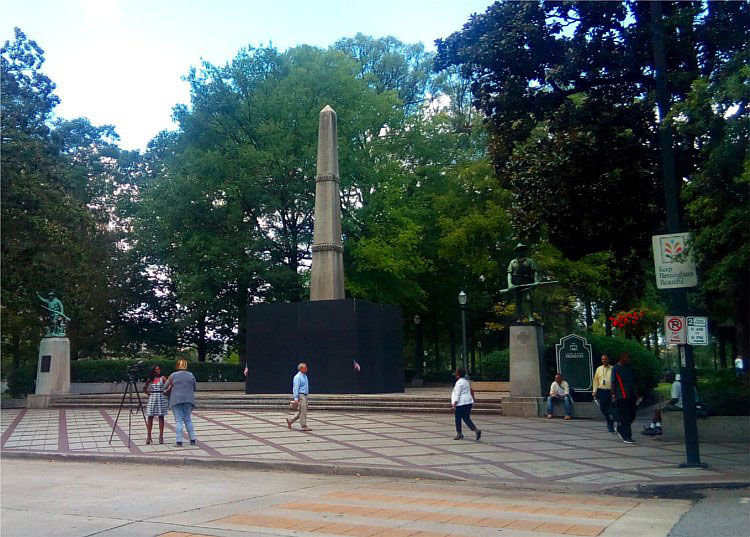
The city covered part of a Confederate monument while deciding what to do.
California
Los Angeles
1 Marker Removed
There was a Confederate monument in the Hollywood Forever Cemetery in Los Angeles, CA. It has since been taken down after numerous requests for its removal. (Wikimedia Commons)There was a Confederate monument in the Hollywood Forever Cemetery. It has since been taken down after numerous requests for its removal.
San Diego
1 plaque removed
A plaque that had honored Jefferson Davis, the president of the Confederacy, was removed from Horton Plaza Park.
Florida
Gainesville
1 monument removed
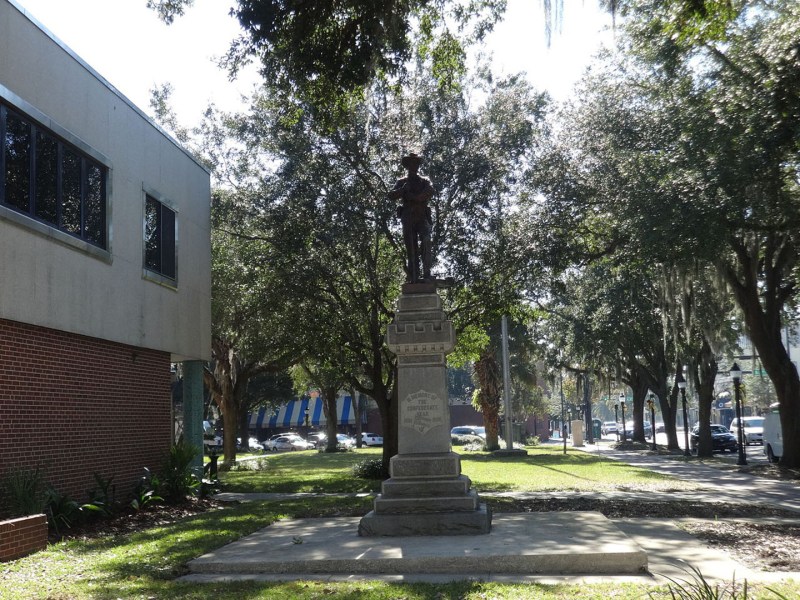
A monument known to locals as “Old Joe” was moved from outside the Alachua County Administration Building in downtown Gainesville to a private cemetery outside the city. It had stood in front of the administrative building for 113 years. A local chapter of the United Daughters of the Confederacy paid for the removal, reports The New York Times.
Pensacola
1 call to remove from square
Mayor Ashton Hayward has called for the removal of a Confederate statue at the city’s Lee Square. The city was in Confederate hands for about 16 months, and the square was named after Confederate general Robert E. Lee. A 50-foot Confederate monument stands in the park.
Jacksonville
Call for statues to be moved to museum
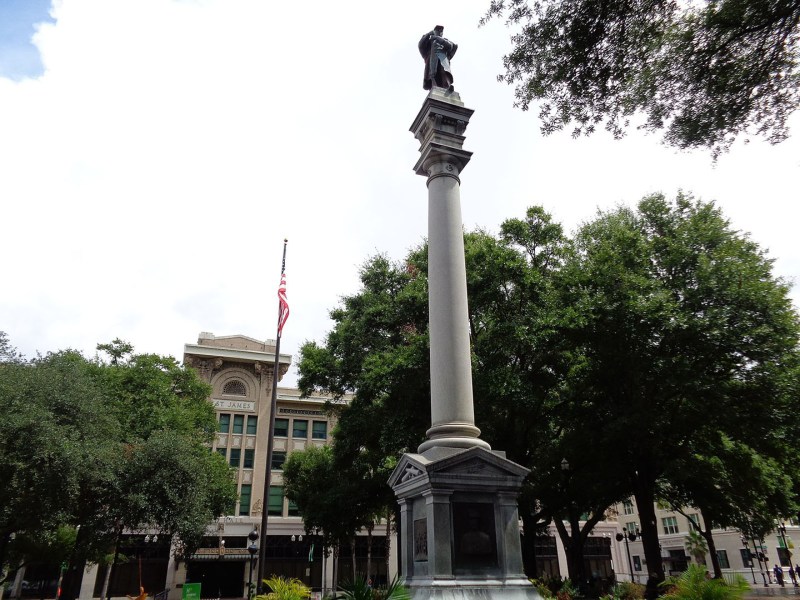
The president of City Council called for all statues to be moved from city property to museum. Nothing has happened yet.
Tampa
Statue being considered for removal
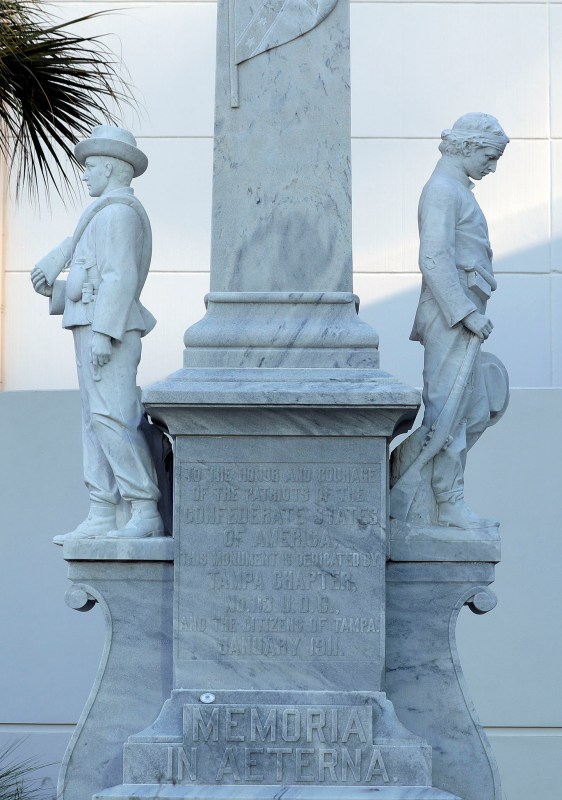
Hillsborough County Commissioners decided on Aug. 16 that a Confederate monument in Tampa will only be removed if enough private money can be raised, reports The New York Times. Tampa’s three major sports teams have all offered to help pay for the monument’s removal.
Orlando
1 statue moved
A Confederate statue known as “Johnny Reb” was moved from a public park to a cemetery in June. During the move, they found a time capsule with items including Confederate money, reports The New York Times.
St. Petersburg
1 plaque removed
A plaque honoring Stonewall Jackson was removed by city officials.
Bradenton
1 memorial removed
A Confederate memorial was removed and the spire was broken.
Daytona Beach
3 plaques removed
The Mayor removed three Confederate plaques from a park.
Georgia
Stone Mountain
Calls to remove faces from stone carving

Robert E. Lee, Jefferson Davis and Stonewall Jackson are carved 400 feet above the ground on the side of Stone Mountain. The carving is protected by law, but Democratic candidate for governor, Stacey Abrams, called for the removal.
Indiana
Indianapolis
1 call for removal

After a call for removal of the Garfield Park’s memorial, the Indianapolis Parks and Recreation department is exploring options to remove a monument memorializing the deaths of Confederate prisoners of war.
Kansas
Kansas City
1 monument removed
The memorial to Confederate women, which was a 1934 gift by the United Daughters of the Confederacy, was removed Aug. 25 after being defaced on Aug. 18.
Kentucky
Lexington
Two statues will be moved
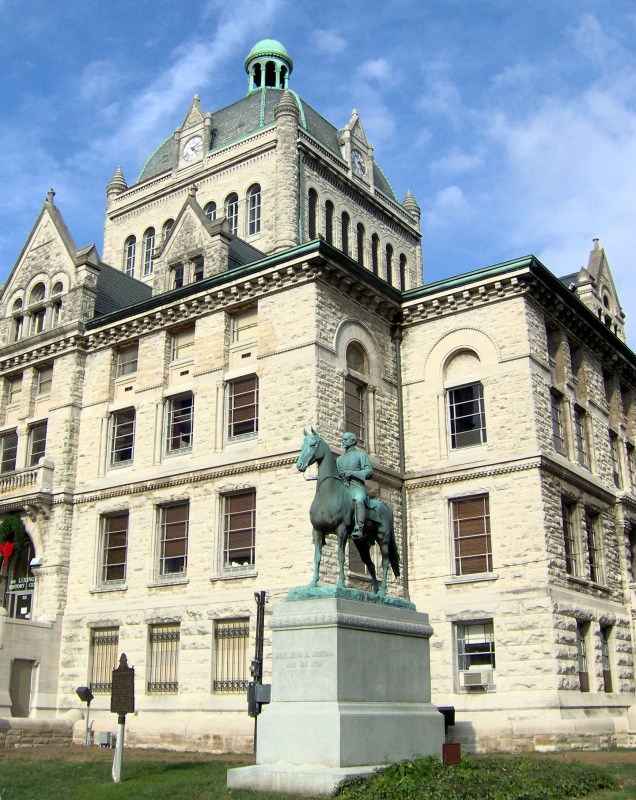
Two Confederate statues were removed from the historic courthouse. Statues of John C. Breckinridge, a U.S. vice president and Confederate secretary of war, and Confederate General John Hunt Morgan, will be moved into storage until the city works out an agreement to move them into Lexington Cemetery, where the two men are buried. Private donors agreed to pay the fee for relocation.
Frankfort
1 statue under consideration
Multiple Republicans have called for the removal of a statue of Jefferson Davis.
Louisville
1 statue moved
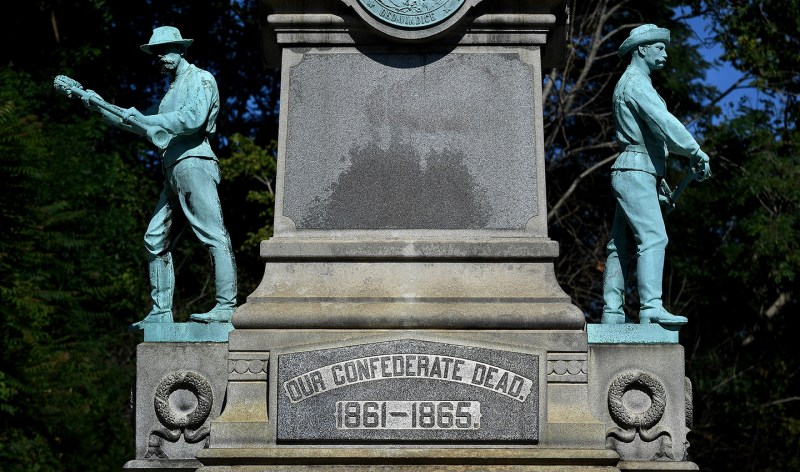
A Confederate statue was moved to Brandenburg, Ky last May. It had been on the University of Louisville’s campus.
Louisiana
New Orleans
Four monuments removed
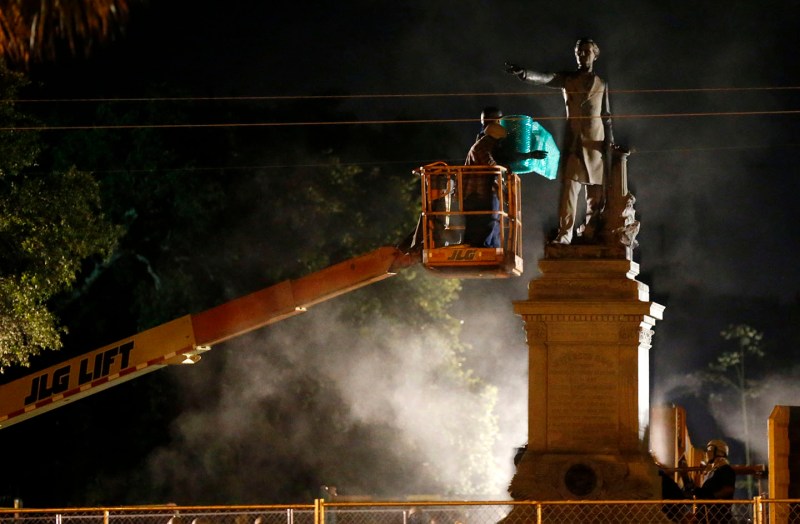
Four monuments that were dedicated to the Confederacy and opponents of Reconstruction were removed in April.
Maryland
Annapolis
1 statue removed
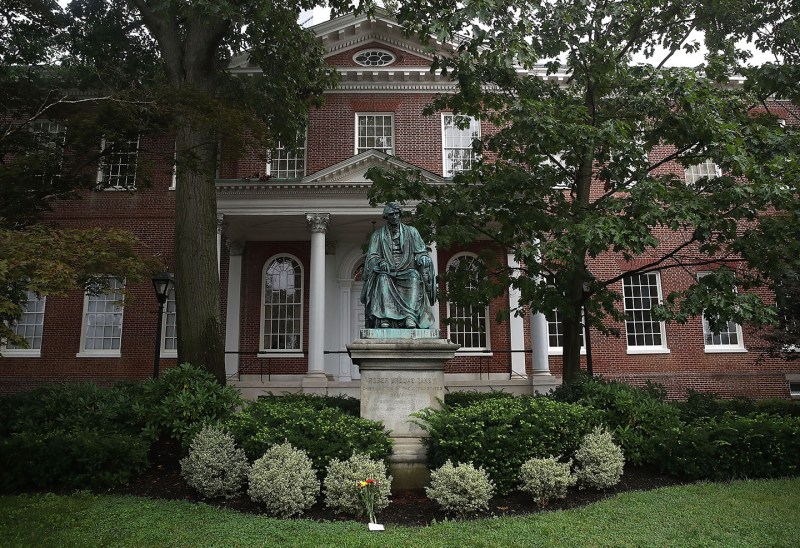
A statue of Roger Taney was taken down around 2am on Aug. 18. It had been positioned outside the State House. Gov. Larry Hogan, a Republican, called for its removal, even though the previously stated position was that it was tantamount to political correctness. Justice Taney was the chief author of the 1857 Red Scott decision, which ruled that all African-Americans, slave or not, could not be American citizens.
Baltimore
4 statues removed

The mayor of Baltimore, Catherine Pugh, felt that it was in the best interest of public safety to remove statues in her city. Four monuments that honored the era of the Confederacy were taken down on Aug. 16.
Frederick
1 statue removed
Roger B. Taney statue was removed from Frederick City Hall.
Ellicott City
1 statue removed
A Confederate statue that had been outside the courthouse was removed.
Rockville
1 statue moved
A Confederate statue was moved from the courthouse. The statue will be installed near White’s Ferry, which is a privately run ferry in Dickerson, Maryland.
Massachusetts
Boston
State decides
There is a Confederate statue on Georges Island in Boston Harbor that has been covered, but not removed. Governor Charlie Baker, a Republican, said that they should, “we should refrain from the display of symbols, especially in our public parks, that do not support liberty and equality,” according to The New York Times. The state is still deciding what to do.
Missouri
St. Louis
1 memorial removed
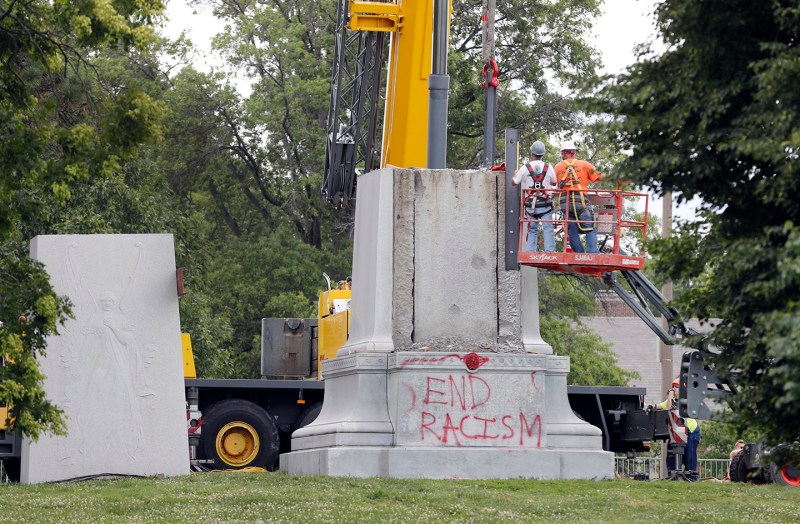
A Confederate monument was removed from Forest Park after a campaign by activists.
Montana
Helena
1 memorial removed
A Confederate memorial was removed from a city park.
New York
Democratic Mayor Bill de Blasio ordered a 90-day review of “symbols of hate” on city property. He set up a commission to evaluate the statues and monuments. The commission is also holding public forums — one in each New York City borough — in order to hear citizen’s opinions. The panel’s co-chairman, city Commissioner of Cultural Affairs Tom Finkelpearl, said during the Queens public forum that the committee plans to make recommendations to the mayor by the end of the year.
Brooklyn
Two plaques removed
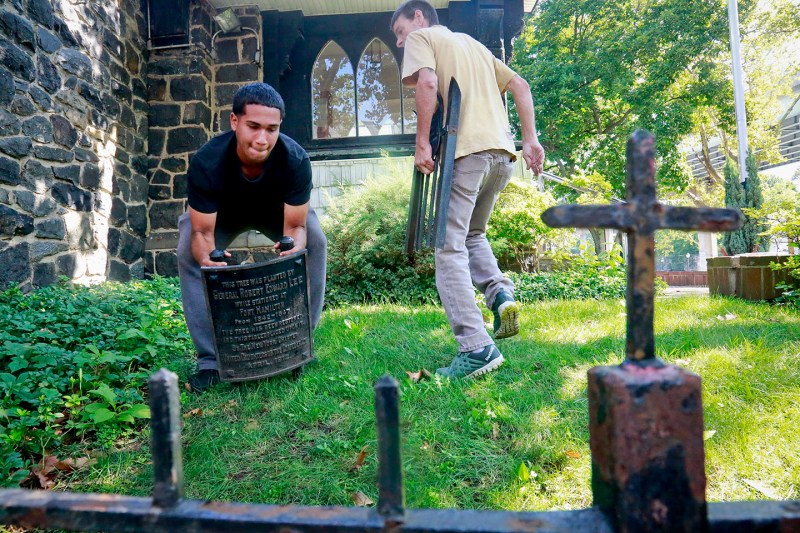
Two plaques honoring a tree planted by Robert E. Lee were removed on Aug. 16. The Episcopal church where the tree was planted received multiple threats after it was taken down.
The Bronx
Plan to remove and replace busts
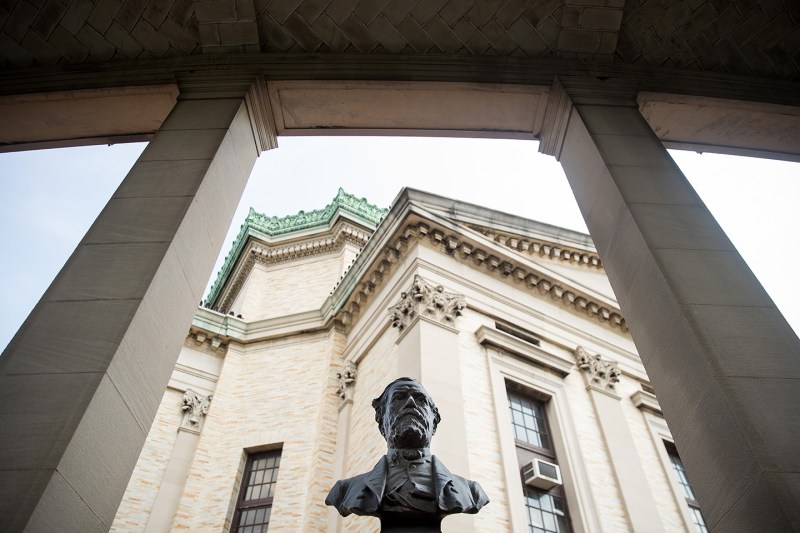
Thomas A. Isekenegbe said that Bronx Community College will remove the busts of Stonewall Jackson and Robert E. Lee from its Hall of Fame for Great Americans.
North Carolina
Durham
2 statues removed (one was toppled by protestors)

A statue that had stood in front of the Durham County Courthouse was pulled down by protestors on Aug. 14. It was protected by law. Eight people were arrested.
Duke University also removed a Robert E. Lee statue from Duke Chapel
Chapel Hill
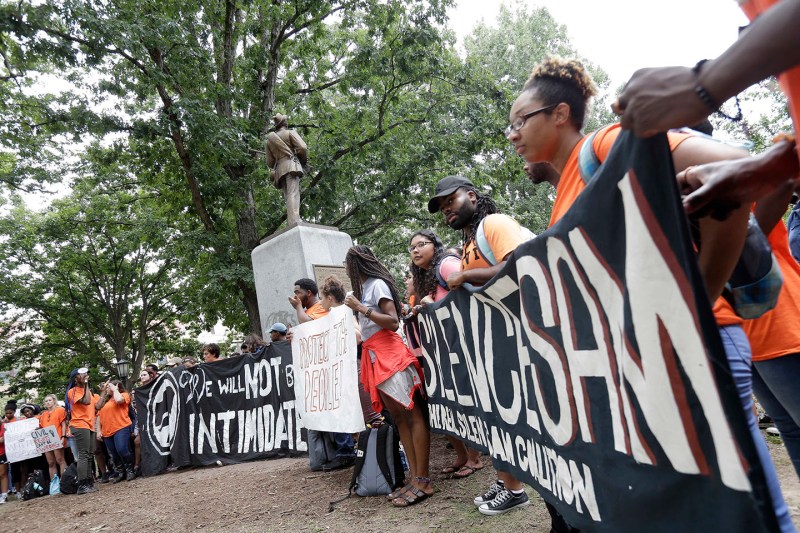
UNC Chapel Hill’s Silent Sam statue, which was dedicated to students who left school to fighting the Civil War, has been the center of many protests. A state law requires that elected officials seek approval from the N.C Historical Commission before removing historical monuments, but students have been protesting the statue for month. On Aug. 22, hundreds of people gathered to protest the continued presence of the statue, and many public figures, including U.S. Rep. David Price, D-N.C., former Chancellor James Moeser and Chapel Hill Mayor Pam Hemminger, have called for its removal. The Mayor of Chapel Hill has said that the university can remove the statue is leaders “believe there is real risk to public safety,” reports The New York Times.
An attorney representing the UNC Black Law Students Association sent a letter to Chancellor Carol Felt and UNC system President Margaret Spellings, saying that he may file a lawsuit if the statue is not removed.
Ohio
Franklin
1 marker removed
A marker of Robert E. Lee was removed by city officials over night.
Worthington
1 marker removed
There was a marker of a Confederate general’s birthplace. It has been removed.
Tennessee
Memphis
1 considered for removal
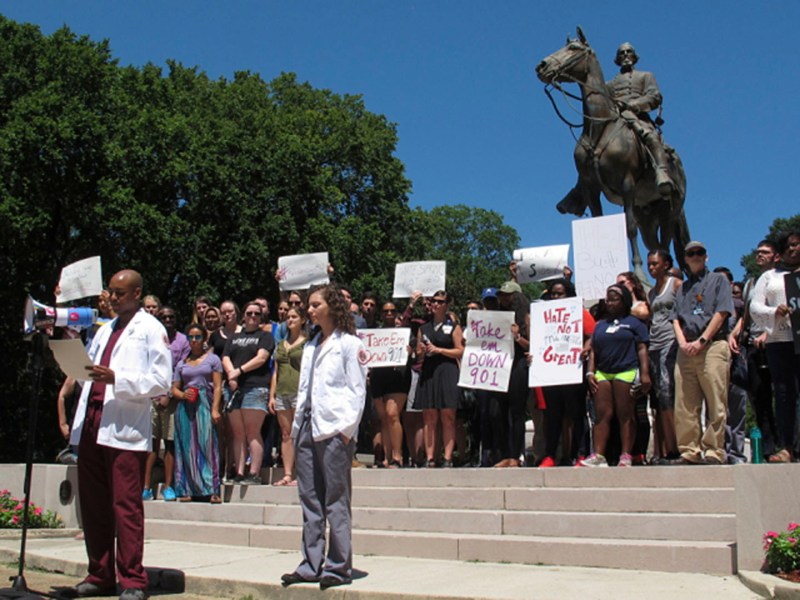
The city is trying to remove a statue of Nathan Bedford Forrest, a Confederate general. It is currently located in a city park. However, this action needs approval from a state agency and an original request to remove the statue was denied. However, On Dec. 14, the city of Memphis filed a petition and asked for judicial review of this denial.
Nashville
Protests over statue

A 2016 law supposedly makes it difficult to remove statues, according to Gov. Bill Haslam, a Republican. There is a bust of Nathan Bedford Forrest in the state capital, and though Gov. Haslam has said, according to The New York Times, that Forrest should not be honored, it needs to be a decision made by a commission. At the end of August, protestors held up traffic outside the Tennessee State Capitol building.
Texas
Austin
3 statues removed

Robert E. Lee and Albert Sidney Johnson were both Confederate generals. John Reagan was a Confederate cabinet member. Statues of all three men were removed from the University of Texas’s campus on Aug. 21. Previously, a statue of Jefferson Davis was removed in 2015.
Dallas
1 removed
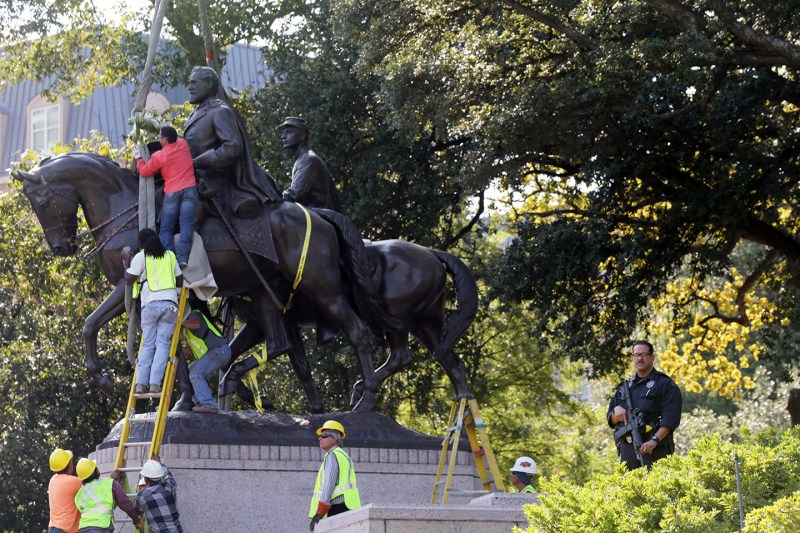
In August, Mayor Mike Rawlings created a task force to look at the issue in order to come up with a solution that would leave Dallas “united.” Since then, a Robert E. Lee statue was removed from a park on Sept. 15 after an emergency city council vote approved its removal. It will be stored until they decided what to do with it.
San Antonio
1 statue removed
A statue in Travis Park, San Antonio, Texas. The statue was taken down on Sept. 1. (Wikimedia Commons).A statue that stood in Travis Park for over 100 years was taken down on Sept. 1. The City Council voted 10-1 to approve its removal.
Virginia
Charlottesville
Robert E. Lee statue still stands, proposal to remove it

One woman was left dead and 34 were injured during a far-right protest against the proposed removal of a statue of Robert E. Lee, but the statue remains. Miriam Dickler, the director of communications for the city of Charlottesville told RealClearLife that “the issues of the statues is currently in litigation” and that as a matter of practice, they do not comment in depth on matter in litigation. However, she also said that “the City Council decision to remove the statues is being challenged in court by groups and individuals who believe that the removal of such monuments violates Virginia code.”
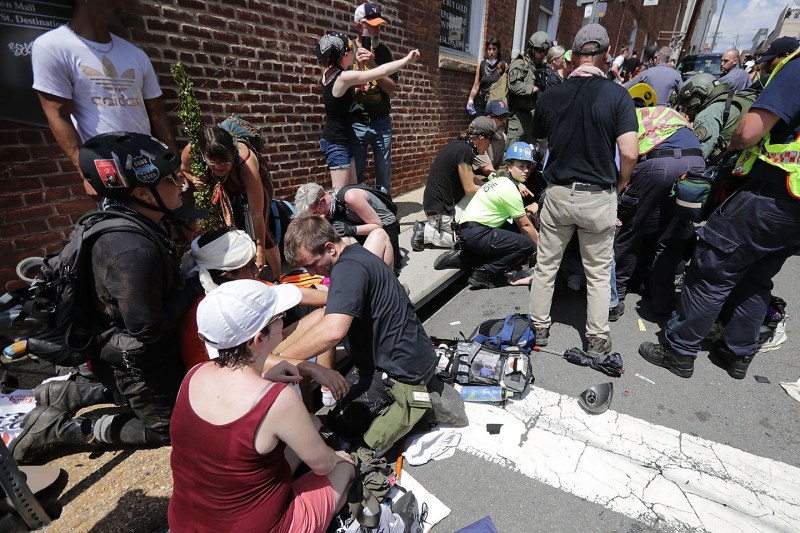
Norfolk
Under discussion
Mayor Kenny Alexander wants to see the Confederate monument moved to cemetery. He asked council to address the issue back in August. However, Virginia law says that once a monument memorializing war veterans is erected, localities can’t “disturb or interfere with” it.
Richmond
Mayor started commission to consider removal
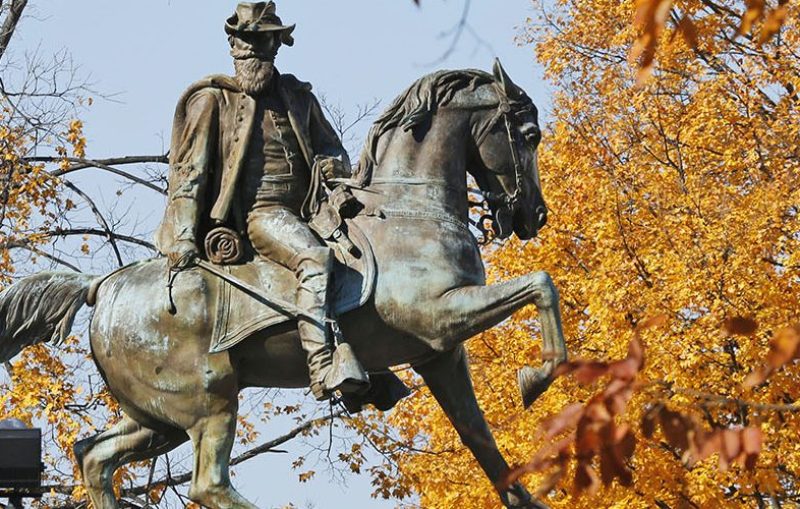
Mayor Levar M. Stoney said that the large Confederate statues on Monument Ave should be removed. Richmond has long been considered the capital of the Confederacy. The Mayor directed a commission to consider removing all or some of the infamous statues.
Portsmouth
Mayor calling for removal
Mayor John Rowe has said that the Confederate monument in the city, which includes both statues and an obelisk, should be moved to a cemetery. It is currently on High Street. In August, protestors of removal gathered at the monument.
Alexandria
City Council voted
In 2016, the Alexandria City Council unanimously voted to try to move the statue. However, according to Craig T. Fifer, the director office of communications and public information for the City of Alexandria, two state laws prohibit doing so. Fifer told RealClearLife that the “city’s legislative delegation has indicated that they will try to get these laws changed once the General Assembly convenes in January. Until the laws are changed, no other City action is pending.”
Washington
District of Columbia
Proposal to remove statues from Capitol building, park
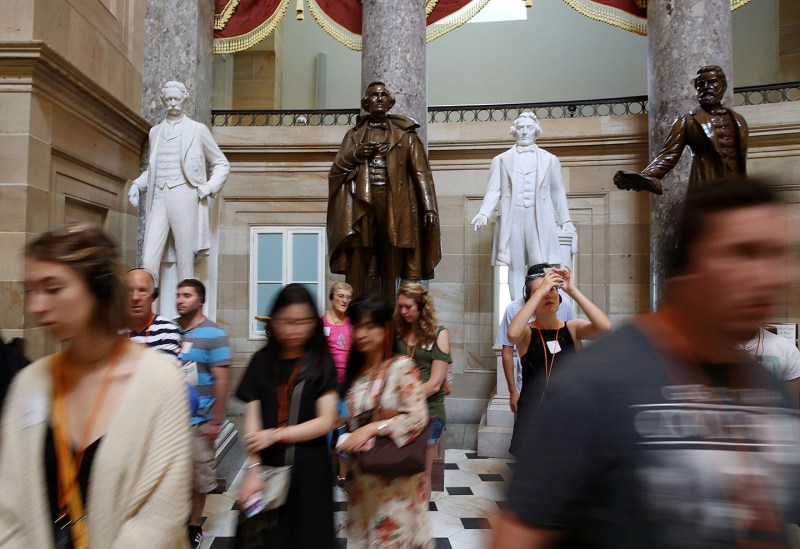
There are at least 12 Confederate statues within the U.S. Capitol building, in the National Statuary Hall Collection. New Jersey Senator Cory Booker has said he would introduce a bill to remove them. Also, D.C. officials have called on the National Park Service to remove a statue of Albert Pike, a Confederate general, from a park, reports The New York Times.
Washington State
Seattle
1 call for removal
Seattle Mayor Ed Murray called for the removal of a monument dedicated to Confederate soldiers and a statue of Vladimir Lenin to be taken down back in August. He said they represent “historic injustices” and are symbols of “hate, racism, and violence.” However, Murray resigned after multiple allegations of child abuse and sexual molestation.
Wisconsin
Madison
1 plaque removed
A Confederate plaque was removed from a cemetery. The mayor ordered the removal, saying the Civil War was “a defense of the deplorable practice of slavery” and “an act of insurrection and treason.”
This article was featured in the InsideHook newsletter. Sign up now.






















